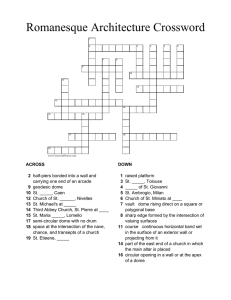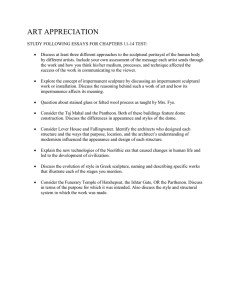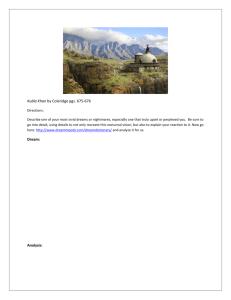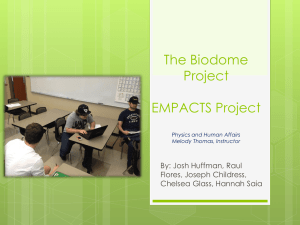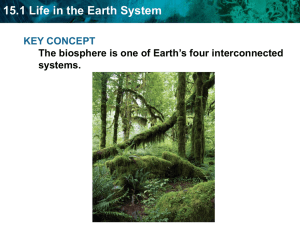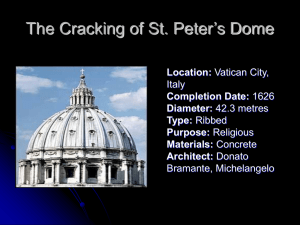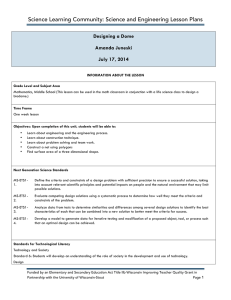Biodome Description: Students will prepare to live in a biodome for 1
advertisement
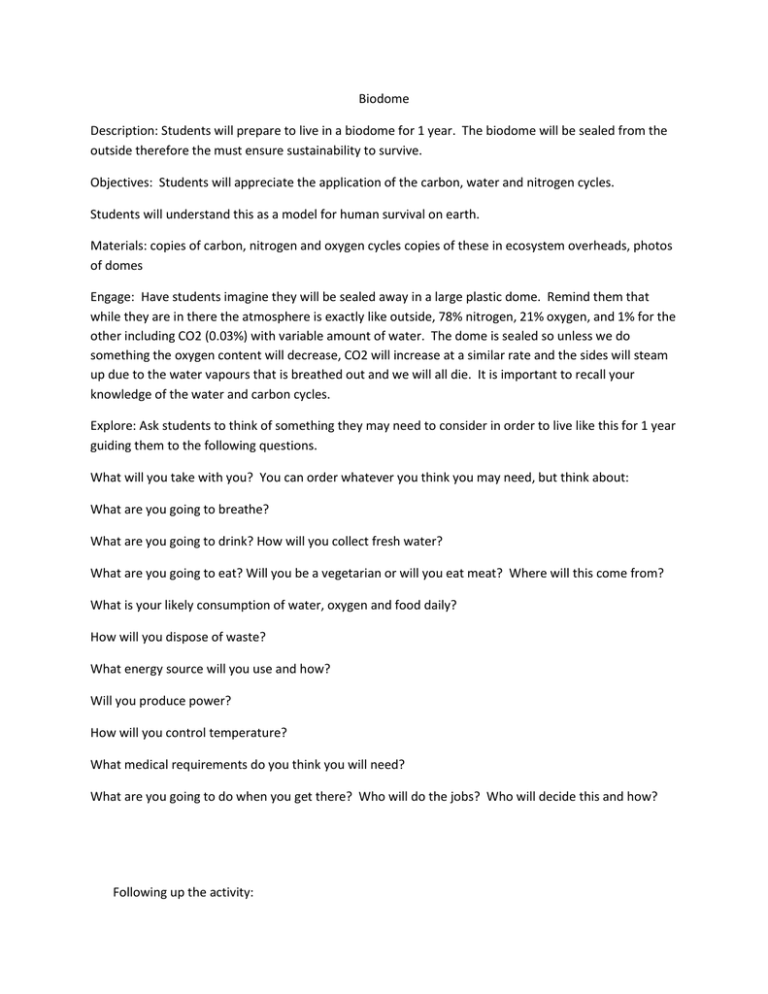
Biodome Description: Students will prepare to live in a biodome for 1 year. The biodome will be sealed from the outside therefore the must ensure sustainability to survive. Objectives: Students will appreciate the application of the carbon, water and nitrogen cycles. Students will understand this as a model for human survival on earth. Materials: copies of carbon, nitrogen and oxygen cycles copies of these in ecosystem overheads, photos of domes Engage: Have students imagine they will be sealed away in a large plastic dome. Remind them that while they are in there the atmosphere is exactly like outside, 78% nitrogen, 21% oxygen, and 1% for the other including CO2 (0.03%) with variable amount of water. The dome is sealed so unless we do something the oxygen content will decrease, CO2 will increase at a similar rate and the sides will steam up due to the water vapours that is breathed out and we will all die. It is important to recall your knowledge of the water and carbon cycles. Explore: Ask students to think of something they may need to consider in order to live like this for 1 year guiding them to the following questions. What will you take with you? You can order whatever you think you may need, but think about: What are you going to breathe? What are you going to drink? How will you collect fresh water? What are you going to eat? Will you be a vegetarian or will you eat meat? Where will this come from? What is your likely consumption of water, oxygen and food daily? How will you dispose of waste? What energy source will you use and how? Will you produce power? How will you control temperature? What medical requirements do you think you will need? What are you going to do when you get there? Who will do the jobs? Who will decide this and how? Following up the activity: If your year is successful and the dome systems are running well, you will have lived sustainably using only renewable solar energy. Are there lessons from this activity for future sustainable life on Earth? What will you miss most? What might cause failure? There could be both scientific and non-scientific reasons. Think about the size of the dome and numbers of plants needed to sustain an individual/group. Underlying principles: The carbon, water and nitrogen cycles underpin sustainable living. Matter is neither created nor destroyed though its form may change, i.e. whatever you take into the dome will still be there at the end of the year in one form or another. Thinking skill development: There is a pattern (construction) to planning to live in the dome. Doing one thing causes effects that also require action e.g. the advantage of eggs and meat from keeping chickens means that the birds have to be fed, watered and kept clean, (cognitive conflict). There will be discussion of how to make life in the dome sustainable for a year, (metacognition). Sustainability of life in the dome can be applied to discussion of future sustainability of life on Earth (bridging). Additional notes: This experiment has been carried out. It was known as Biosphere 2 and took place in Arizona between 1991 and 1993. It failed because oxygen levels dropped from 21% to 14%. 19 out of the 25 vertebrate species died. Pests increased greatly and the humans needed food supplements. Useful links: Biosphere 2 Center -http://www.bio2.com/ http://www.biospheres.com/ or by searching for “Biosphere 2” on the internet. The Desert USA website http://www.desertusa.com/mag99/apr/stories/bios2. html Note: The project was called ‘Biosphere 2’ because ‘Biosphere 1’ was regarded as the Earth. Source: This activity was devised by the Earth Science Education Unit, as part of KS4 Life, atmosphere and everything. www.earthscienceeducation.com
